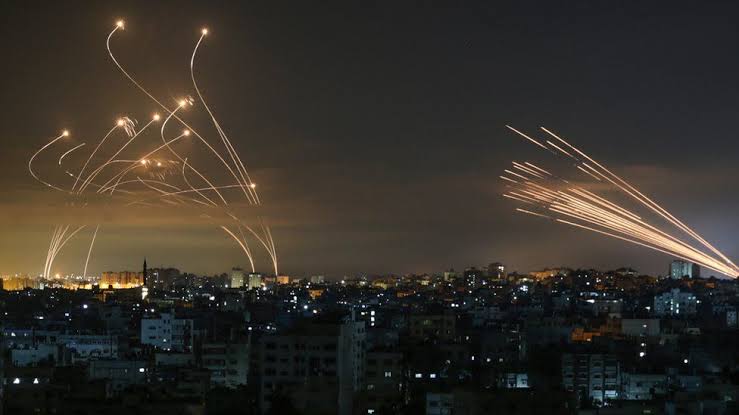Drone attack- What India needs to do and learn from the world

On 26th and 27th June, a drone dropped two explosive devices on Jammu airfield, the explosion hurt a few bystanders, but no significant damage was reported. This attempt has scared the living daylights out of innocent people and caused considerable anxiety and confusion. Introductory investigations conducted by the Jammu and Kashmir police found out the involvement of Pakistan-based terror outfits Lashkar-e-Taiba (LeT). The attack is also connected with a 6 kg Improvised Explosive Device (IED) recovered by the Jammu and Kashmir police from an LeT operative.
Further investigations led to the arrest and detention of three terror suspects by the police. When the police thought the show was over within 24 hours of the attack, two similar drones were noted over Ratnuchak Kaluchak military area in Jammu. The soldiers opened fire at the drones in retaliation. On Sunday night, two more drones were spotted between 11 PM to 2 AM over the Indian Air Force military stations; the soldiers opened fire in retribution, after which the drones flew away. Drones were spotted at three more places in the Jammu city on Tuesday night which has alerted the security agencies.
After these incidents, the police reported that many drones had been sighted near Jammu and Kashmir. According to the police, Pakistan uses drone technology to transport weapons, ammunition, drugs, arms and Hawala money to fund terrorism in India. It is of utmost concern to India that Pakistan is brought in line and understood that it can not get away with such deeds. This attack is deemed as an attempt by Pakistan to disrupt peace in the region after article 377 was scrapped. Even though no casualty was reported, India cannot afford to ignore these drone attacks, sightings and must step up its game.
Finding the launch pads of drones is not going to be an easy task. Gaza incident has successfully depicted that these rockets and drones are launched on trucks and jeeps; these jeeps launch and move. Similarly mobile launching pads are used to launch drones. Security forces, the Indian military and the defence research and development Organisation DRDO, are experimenting with drone technology for a decade.
Meanwhile, simultaneous inventions in drone technology have made it cheaper, easily accessible and practical. The world is now experimenting with delivering pizzas by drones, which shows us how capable the technology has become. Technological progress has improved payload capacity, endurance and flying range. Drones can be bought from the online market as one buys mobile phones. To prevent its misuse, governments are coming together to develop policies and related laws on ownership, flying regulations and commercial use of drones.
What is the status of drone technology in India?
India recently signed a $3 billion deal with US-based company General Automatics to purchase 30 armed drones. Indian military uses drones which include Heron surveillance drones and Harop loitering munition for surveillance. The surveillance purpose helps in gathering intelligence and carrying out armed missions far from enemy lines.
It prevents loss of life of soldiers and pilots on tough terrain like mountains, deserts, ice, tunnels et cetera. Hindustan Aeronautics Ltd (HAL) develops drones to team up unmanned aircraft and vehicles with piloted jets. The HAL drone, known as Combined Area Teaming System or CATS, is inspired by the US skyborg project; its blueprint was displayed in the Aero India show in Bangalore. These drones will be incorporated on Jaguar fighter jets or Tejas; they will have stealth capabilities to evade radar detection. The prototype is expected to fly in four years. Seeing the current situation, four years is a long wait, and India needs to speed invention to get drones on the ground within a year.
Smash 2000 plus is Israeli computerised fire control and electro-optic system, which is mounted on guns and rifles to tackle threats from armed drones in day and night conditions. Armed forces imported the system, and it is widely used. DRDO has developed an anti-drone Directed Energy Weapons (DEW) system with a 10 kW laser to blast aerial targets within a 2 km range. It has a tripod that has a 2 kW laser capable of blasting targets in a 1 km range. The only problem is this system is yet to be produced on a large scale.
What is the existing policy on drones in India? What does India need to do to avoid such incidents?
Unmanned aircraft system (UAS) rules 2020. The policy includes a set of regulations made by the government to control the production, trade, ownership, import and establishment of drone airports and their operation. It also provides a framework if any entity wishes to use drones for business purposes – delivering pizzas via drones.
National counter rogue drone guidelines 2019 – After sighting rogue drones around strategically essential areas and assets, these rules were operationalised. The government came up with measures to control rogue drones to prevent terror attacks, loss of information, transport of drugs, arms and ammunition.
For places that hold importance to national security and integration, primary and passive detection radars like Radio Frequency detectors, electro-optical infrared cameras were deployed. RF jammers, Global Positioning System GPS force, lasers and drone catching nets were installed to prevent rogue drones.
Drone regulations 2.0 policy –
After these attacks, the government has announced a revised policy on drone management. The policy will include critical issues like
The Centre will tighten certifications of sale of drone hardware and software; this will enable the government to trace the owner ID of the drones used for terrorist activities. The policy will establish separate airspace for drones called the drone corridor to foster a commercial drone ecosystem in India. The government will establish a UTM system to manage drone traffic; new rules will be operationalised to increase commercial drone activities. The policy will also allow algorithms to control the drone under specific terms and conditions instead of a compulsory remote human pilot.
The new policy will also include airspace administration through automated procedures that are connected to the airspace. It will consist of operations that are beyond the visual line of sight. While doing this, the government aims to adhere to and establish global norms.
What can the world teach us in drone technology?
The most sophisticated anti-missile system is Israel’s ‘Iron Dome’, which acts within a snap of fingers. It is a mobile all-weather air defence system developed by Rafael Advanced Defence System and Israel Aerospace Industries. This system can destroy short-range rockets and artillery shells fired from 4 km to 70 km away to prevent them from entering Israel’s populated areas. Iron Dome is part of a multi-tiered defence system which includes Arrow two, Arrow three, Iron Beam, Barrack eight and David’s Sling. Iron Dome is 90% successful in intercepting aerial attacks; it intercepted a thousand rockets out of 2300 rockets launched at Israel.
When rockets were launched from Gaza on Israel in 2009, Israel had to roll in tanks into Gaza to stop them. To avoid such mishaps, it used precision airstrikes similar to the American system. Due to repetitive threats from Hezbollah and Hamas, Israel’s nightmare of a multi-front war is always lurking around the corner. The recent war illustrated the need for a multi-tiered missile system to counter threats and reduce loss of life – the Iron Dome fits perfectly in this scenario. Precision airstrikes left a lot of civilians in Gaza dead, but it deterred the enemy.
India needs to learn from Israel to increase technology and innovation instead of using foot soilders to deter threats and attacks.




